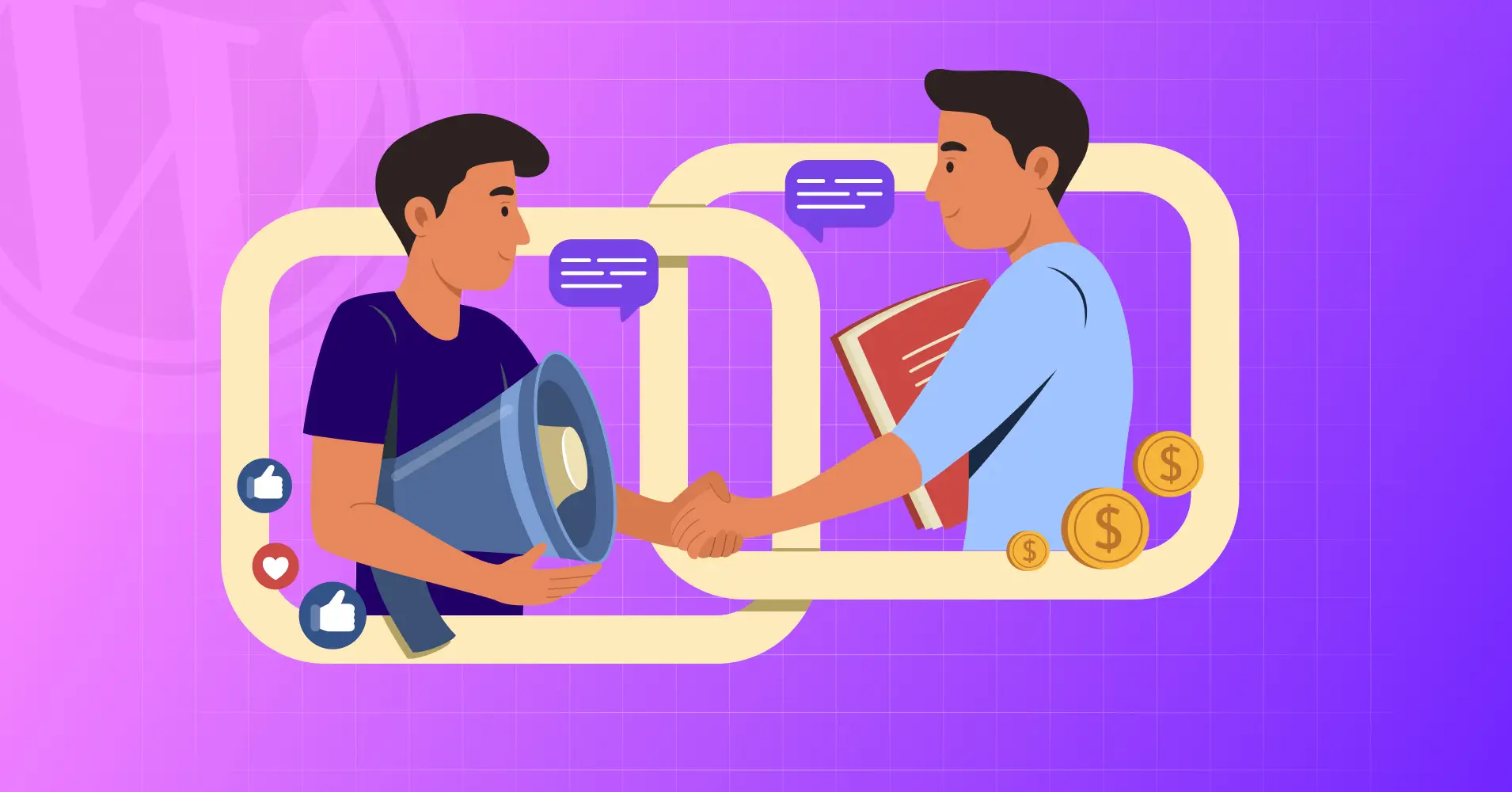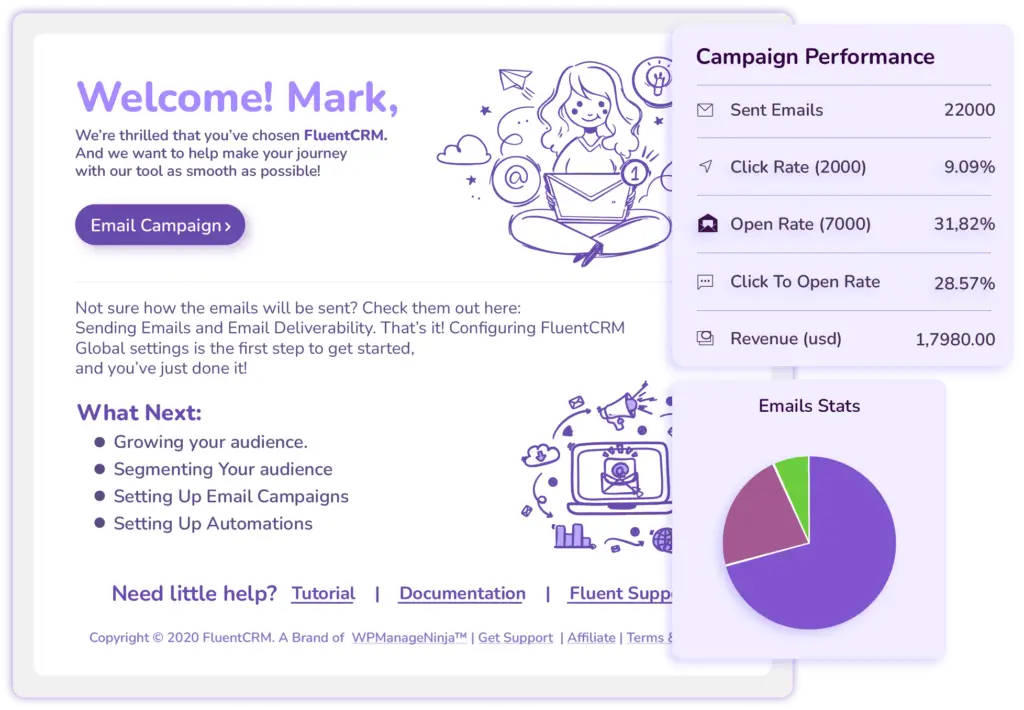
11+ Useful Tips for Building Customer Relationships to Win Hearts (& Repeat Sales)
One fine morning, we were discussing product improvement and came across a great quote by Jeff Bezos, founder of Amazon,
We see our customers as invited guests to a party, and we are the hosts. It’s our job every day to make every important aspect of the customer experience a little bit better.
This statement made us more aware of the fact that building customer relationships is the ultimate solution to grow our business.
We all know, every business starts with some similar goals:
- Customer Acquisition
- Customer Retention
- Cost Minimization
- Selling More
- Making Profit
Every aspect is important, but the customer plays the crucial role since business revolves around customers. It’s the customer who makes or breaks any business.
So this article is all about how a business can make customers happy by building a better relationship. We’ll look into some of the best ways to build customer relationships that don’t just help retain, but also inspire brand advocacy.
Why Building Customer Relationships is Important?
Among the priorities to run any business, customer acquisition comes at the top. After that comes the most difficult and vulnerable part, which is: Customer Retention.
According to a 2019 study by Edelman Trust, Over 80% of people want to buy products from trusted brands.
So without a doubt, building customer relationships is important.
Also, these days, “Attract”, “Engage”, and “Delight” are 3 buzzwords in today’s market.
Most businesses concentrate most of their budget and energy on “attracting” new audiences. With 44% of businesses spending more on customer acquisition and only 18% focusing on customer retention, it may seem like customer acquisition is the way to go. However, statistics say otherwise.
So, existing customers are 60-70% likely to convert. In comparison, the probability of selling to a new customer is relatively low.
Not just that, whether you’re launching a new product or promoting your existing ones, customer retention is the way to go.
The best way to retain customers?
According to 89% of businesses, customer experience is the key. If you can build a better relationship and ensure a good experience, you’ll:
- Retail More Customer: Strong relationships keep your customers coming back. By building customer relationships, people will feel valued, heard, and connected to your brand; they’re far less likely to switch to a competitor.
- Reduce Churn: Customers don’t switch because of the cost; they leave because of the lack of communication and service. When you build a good relationship, it decreases the overall customer churn rate.
- Boosting Customer Lifetime Value (CLV): By nurturing strong relationships, each customer stays longer and spends more. This turns one-time buyers into repeat purchasers, maximizing the total revenue you earn from them.
- Increase Brand Advocacy: When your customers are so satisfied, they recommend it to their friends. Satisfied customers are way more likely to recommend your products to their friends and family.
11+ Proven Strategies for Building Customer Relationships
From legendary CEOs like Jeff Bezos to business magnates like Bill Gates, everyone admitted that customers make a business, one way or another. So, we can all admit: Customers are the boss.
Building customer relationships requires effort, and the action needs to be driven by one or multiple strategies. Here are the ten best ways to build better customer relationships:
Know Your Customers Well
“Instead of focusing on the competition, focus on the customer.”
– Scott Cook
What’s the first thing you do when reaching out to someone? Of course, no one likes strangers. And that’s why knowing your customer comes first.
In today’s market, you need to figure out your customers’ pain points, tap into their emotions, and empathize with them with the right kind of solution. You need to find out how your customers have ended up arriving and what made them interact with your business.
Such information will help you gain insights into their interests and help you better analyze their habits. For example, you manage your business through a website, and your customers typically land on particular pages of your website through social media. We can identify this as an “interest.” If the customer ends up buying one of your products, this can indicate your customer’s buying habits.
Once you know about your customer, communications get easier, enabling you to form a meaningful relationship.
Learn Why Past Customers Left
You know what your customers like, what they prefer, and what interests them. But is that really enough to build a strong connection?
Not quite. You also need to understand what’s bothering them or getting in the way of them so they stop engaging with your business.
“Your most unhappy customers are your greatest source of learning.”
– Bill Gates
So, does your business experience a high customer churn rate?
If yes, then perhaps you’re not paying attention to why your customers are leaving.
Understanding how to prevent customers from leaving starts with learning why your past customers left. Was it a pricing issue, a bad experience, unmet expectations, or simply that they found a competitor offering something better?
Possibly, you’ll likely find common reasons that are making customers go. These will not only highlight weaknesses in your business but also reveal opportunities to win them back.
If you are dealing with your customers via business emails, then a simple apology, an improved offer, or a personalized email can reignite the connection. Like we said before, retaining an existing customer is (almost always) more cost-effective than acquiring a new one.
Personalize the Customer Experience
I was watching a drama series on Apple TV a few days ago, and immediately after finishing it, I received an email urging me to watch a brand-new period drama. I checked it and eventually ended up watching this too!

The best communication experiences are built upon personalization. You can better empathize with your customers when you can tailor a personalized communication experience for them. It involves tailoring your communications based on your customer’s data, interests, and behaviors.
Discover some of the best email personalization techniques to implement on your next campaign.
Connect, Engage, Communicate, Repeat!
“Get closer than ever to your customers. So close, in fact, that you tell them what they need well before they realize it themselves.”
– Steve Jobs
Effective communication is vital for nurturing strong relationships with customers. Businesses that prioritize availability, responsiveness, and transparency in their communication practices are better positioned to establish trust and loyalty among their audience.
In today’s competitive landscape, customers are bombarded with ads from social media, emails, and various other marketing channels. But irrelevant content will not cut it.
Customers expect seamless communication experiences. Being readily available across multiple channels, including email, phone, and live chat, demonstrates a commitment to meeting customer needs promptly.
What you should aim for is engagement. Use every opportunity to send out greetings on the holidays and reach out to them with helpful content every week. This way, you can earn more insights into your customers’ demographics and behavior patterns that you can later utilize to craft personalized content and emails tailored to them.
Equally important is responsiveness; timely responses to inquiries and issues show customers that their concerns are taken seriously.
Transparency is another cornerstone of effective communication. Providing clear and honest information about products, services, and policies builds credibility and fosters trust. Businesses that prioritize transparent communication are more likely to retain customers and attract new ones through positive word-of-mouth!
Ensure Round-the-clock Support
Support is instrumental for any business. Customers expect reliability, consistency, and round-the-clock support from any organization.
These days, customer support is no longer limited to standard business hours. Customers may reach out at any time — whether it’s a late-night product query, a weekend technical issue, or urgent help during a holiday. Offering good customer service means showing your dedication to being there when they need you most.
Even if you can’t maintain a full-time human support team, having a support ticket system or automated system to answer FAQs, basic technical issues, or just an answering bot ensures no one feels ignored.
Pay Attention to Customer Feedback
“Customers often know more about your products than you do. Use them as a source of inspiration and ideas for product development.”
– David J. Greer
Customers like to participate in product or service improvement. Whether you post about your product on social media or catch your customers talking randomly about your business, they will always have one or two opinions to share about your business. Today’s customers want to be a part of your business, if not the entire business.

By seeking feedback from your customer, you’ll also show that you genuinely care about your customer and value their opinion. And, when you pay attention to feedback and resolve issues, it can establish loyalty among your customers.
Hence, you should be eager to gather customer feedback and implement strategies to deal with them effectively.
Ensure Transparency
“The reputation of a thousand years may be undermined by the conduct of one hour.”
– Japanese proverb
Transparency is about being open to your customers. Hiding information, playing tricks, or not fulfilling the commitment will make your business suffer in the long term, even if your products or services perform better in the short term.
The key to running a successful business is to exceed expectations. If you promise something that you may not have a 100% chance of achieving, you will risk hurting years of customer relationships.
For example, since 2022, FluentCRM users have always inquired about the abandoned cart feature. They were posting constant queries about this on our community platform and Facebook groups.

Although it was technically a bit tricky task to achieve, we assured we would bring it in when the right time arrives, and after a long period of development along with testing, we finally kept our promises in 2024.
And, the response? You can check it below..

So it’s essential to be honest even when the truth doesn’t favor your business. For example, if the possible delivery date is unlikely to be met, let the customer know your limitation; don’t keep them hanging. In most cases, the customer will accept your limitation.
Reward Loyal Customers
“Loyal customers, they don’t just come back, they don’t simply recommend you, they insist that their friends do business with you.”
– Chip Bell
Some customers buy and leave, and some customers buy again and again. What are you doing to repay their faith in your organization? It’s wise to develop a loyalty program for loyal customers. This helps your organization in two ways.
Firstly, you’ll retain more customers, and secondly, the reward policy will also give you a marketing boost.
Some ways to reward your customers can be:
- Offer discounts for high-spending customers
- Allow customers to earn loyalty discount cards
- Offer free gifts for returning customers
- Offer holidays based on points earned via purchases
- Start a referral program
Also, you can arrange giveaways while keeping your brand top of mind. Items such as t-shirts and hoodies can give you a marketing boost and help retain more customers.
Build a Community
“Just having satisfied customers isn’t good enough anymore. If you really want a booming business, you have to create raving fans.”
– Ken Blanchard
Communities get you better insights, trust, support, networking opportunities, and incredible brand advocates. It all begins with customer satisfaction. Having a few customers who will rave about you all over social media is undoubtedly better than having thousands of lukewarm customers.
Apart from customer satisfaction, you can arrange get-togethers to help your customers meet each other or participate in public discussions. Such meetups and discussions are likely to improve customer relationships, and you’ll end up building a community that often raves about you!
Admit Mistakes & Apologize
No business, no service, no product is perfect; mistakes happen. But what makes you stand out is how you handle those mistakes.
When mistakes like a delayed delivery, a billing mishap, or a miscommunication happen, it is better to admit the error and apologize; it will show your customers that you value honesty over saving face. A sincere apology can go a long way in repairing trust.
Here’s an example from our own experience: At FluentCRM, we regularly send multiple emails to our users. A few months back, due to a typographical error, we sent an email with the wrong CTA link. Understandably, this could be annoying for anyone. Instead of brushing it off, we acknowledged the error and added a note with a sincere apology in the email.

Use a Customer Relationship Management System
Excellent customer service takes time. To develop one, you need to consistently track your sales, marketing, and business management team’s data and interactions. Of course, you can maintain a spreadsheet to keep all the data and interactions of your customers. But in the long run, such spreadsheets and notes will eventually feel like a burden.
Thus, we recommend using a customer relationship management (CRM) system similar to FluentCRM. A CRM better manages, segments, and communicates with your customers with effective customer retention emails. The functionalities of FluentCRM are more than good enough to maintain superb customer service, and you’ll also avoid paying for hundreds of features that you’ll never need!
Such systems are made up of reliable customer management tools that effectively provide dedicated customer service. Not just that, you’ll be able to get a grasp of your overall business performance without breaking a sweat!
Stay Patient in Building Relationships
Just like personal relationships, trust grows gradually through repeated positive interactions. Same way, building customer relationships isn’t built overnight; it takes time, consistency, and genuine effort.
You can’t expect a customer to become loyal after a single purchase or one good conversation. Also, you need to understand that every customer moves at their own pace. Some may quickly become advocates, while others need more time and reassurance before committing.
Build a Business That Puts People First
You can compare customer relationships to any other relationship in the world. If you treat a relationship like you treated it initially, you don’t need to worry about it. Like all relationships, you need to keep contacting your customers, understand what will make them happier, and often exceed their expectations.
On the other hand, failure to maintain efficient customer service will result in:
- Poor customer relationships,
- Higher customer churn
- Fewer sales
We tried to give you some of the most popular customer relationship-building tactics in this article above. However, it’s vital to develop a positive company attitude towards customer retention and develop a customer relationship policy of your own. With that said, we hope you will reduce churn, boost customer lifetime value, and increase brand advocacy like never before!
Frequently Asked Questions
Need a little more information?

Nazir Himel
Product Marketing Lead
Hey! I’m an inbound marketing specialist focused on email marketing automation. I love turning complex features into clear, user-centric messaging and when I’m not shaping product stories, I’m experimenting with content frameworks, conversion journeys, and helping others communicate value without sounding salesy!







Leave a Reply